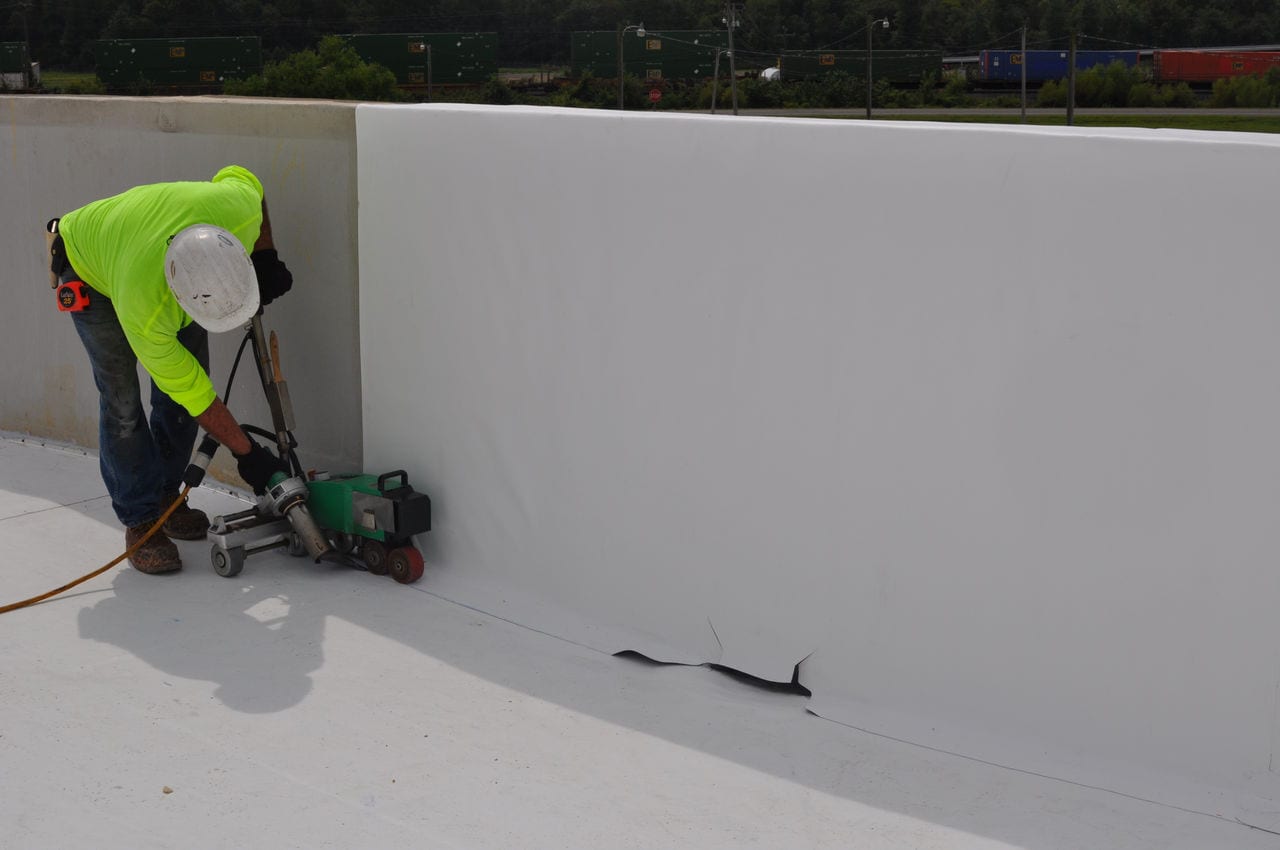We've all seen it: diagonal wrinkling, sometimes called "racking," appearing in membrane base flashings along parapet walls. While seemingly minor, this condition can compromise the long-term performance and watertight integrity of a roof membrane system.
The root cause of these wrinkles often lies in differential movement between the vertical plane of the wall and the horizontal plane of the roof deck. This can stem from the roof deck not being adequately supported by the wall or the roof deck and wall not being appropriately secured to each other. Independent movement of different structural elements can translate to stress at the base flashing. Furthermore, significant thermal differences between an exposed parapet wall and the more protected roof deck can exacerbate these movements, leading to expansion and contraction that the flashing struggles to accommodate.
No roofing material, including robust modified bitumen membrane flashings like Siplast's Veral, is entirely immune to the effects of this type of differential movement. When stressed to the point of wrinkling, the flashing membrane can pull away from the wall, open laps, and even delaminate its surfacing, creating pathways for water intrusion. It's important to note that damage caused by structural movement or substrate movement is typically not covered by membrane manufacturers' guarantees, highlighting the critical need for proactive design.
Isolating base flashing materials from the wall is a way to mitigate these issues. Appropriate curb details, such as the Paraguard Expansion Joint (Roof To Wall) Detail, or installing a wood nailer and L-Metal component following the Parapet, Non-Wall Supported Deck Detail are designed to accommodate anticipated differential movement, protecting the integrity of the base flashing.
For designers and building enclosure professionals, thorough pre-construction analysis is paramount. Understanding the structural dynamics between the roof and wall, considering thermal variations, and incorporating appropriate expansion and isolation details are not just best practices, but essential safeguards. When existing flashing shows signs of racking, a tailored remedial approach based on individual job conditions is necessary.
By understanding the mechanics behind diagonal wrinkling and implementing design strategies that account for building movement, architects and enclosure professionals can significantly enhance the durability and longevity of roof membrane systems, protecting building assets and reputations.
Read the full paper here:
Diagonal Wrinkling (Racking) of Membrane Base Flashing
For more information, please visit Siplast.com.


